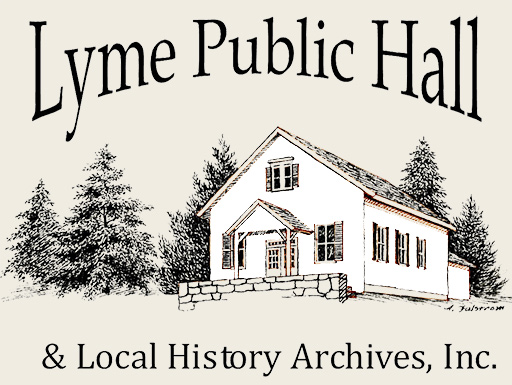Long before a Lyme Public Library was established in 1914, town residents in the 18th and 19th centuries organized a number of ways to lend and borrow books. A surprise? Not really. Although there were books in print, they were not generally accessible or affordable to the general population. It was the case then, just as now, however, that there were people who wanted to be active players in their expanding world and valued the pursuit and pleasure of greater knowledge from books for themselves and the community.
A “Four Town Library” operated from 1737 into the 1790s between Lyme, Guilford, Killingworth and Saybrook. The library traveled (thought to be on the back of a donkey) between the towns every month; books were auctioned off to eager readers and returned when the cart made its next visit. In 1790, the Rev. David Higgins, pastor of the Congregational Church in North Lyme, joined with thirty-eight other Lyme men (proprietors) to form a parish library for the North Society in his home. The books included not only sermons and religious tracts but books on farming, geography, history and etiquette along with the first American novel, The Power of Sympathy. The proprietors bought shares to fund the purchase of the books; they could borrow books up to a value of $2 at a time and could sell or give away their proprietor’s rights after notifying the librarian.

In 1858, Judge John Wight Bill established a free lending library of thirty-five books in his home on Bill Hill to benefit the population living within the First School District area around Bill Hill. Another lending library was established by the Joshuatown Union Sewing Society in 1859 to support the members’ goals of “acquiring and diffusing knowledge, and to avoid in every form sectarianism and bigotry….” The books were donated or purchased with the proceeds of sewing projects. Books were loaned to members who paid their dues and eventually to non-members for a returnable deposit and “ small reading charge”. The records of the Society with membership, meeting minutes, projects and accounts held in the Archives.
The concept of larger lending libraries to benefit a broader public had grown in popularity first in England and Europe in the 18th and 19th centuries and followed in the United States. From the 1890s into the 1930s, Scottish-American businessman Andrew Carnegie made more than 1600 gifts and grants to communities in the U. S. to build libraries. His conditions included that the library operation must have capacity for on-going community support, be free and open to the public. His initiative went far to raise awareness of the benefits of libraries that were free and open to the public and set a model around which much of the United States public library system has developed, including the Phoebe Griffin Noyes Library in Old Lyme and the Lyme Public Library.
This post includes research done for the Lyme Public Hall Association’s exhibit, “Then and Now: Lending Libraries of Lyme,” held at the Lyme Public Hall, Lyme, CT in July 2013.